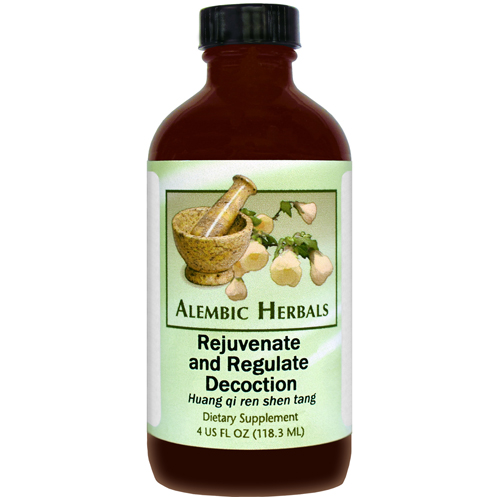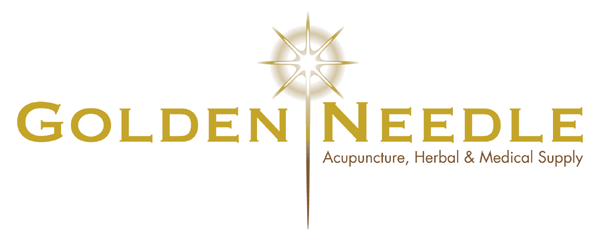Rejuvenate and Regulate Decoction (EXPIRES 04-2025)

Rejuvenate and Regulate Decoction (EXPIRES 04-2025)
| SKU | KAH106-4EXP | |
| Brand | Alembic Herbals by Kan | |
| Unit Size | 4 oz. | |
| Dosage | 20-30 drops, 2-3 times daily. Shake Well | |
| Potency | 7:1 | |
| Properties | Enhances metabolism and supports and regulates the immune system, easing occasional allergic reactions, fatigue, and digestive imbalances Promotes good digestion, supporting the process of weight loss in obesity | |
| Chinese Symptomology | occasional fatigue, somnolence, flaccidity of the legs, sensitivity to extreme heat or cold, sweating, occasional dry stools, tightness below the umbilicus, and lack of appetite | |
| Western Symptomology | obesity, metabolic disorders, chronic fatigue syndrome, multiple sclerosis, candidiasis, allergies | |
| Actions | Supplements Spleen Qi, disinhibits Dampness and vacuity Heat while protecting Yin and Blood, regulates Qi, resolves depression, calms the Liver. Restores normal flow of Qi in the San Jiao/Triple Burner, and restores normal Yun hua/transformation and transportation functions. Cyperus and Anemarrhena have been added to the traditional formulation, to relax and open up Liver Qi depression, and clear Heat and moisten Yin in the upper Burner. | |
| Pattern | Spleen Yang and/or Qi vacuity with accumulation of Damp Heat in the lower jiao, with possible Heart Fire, Lung Yin vacuity, Kidney Qi vacuity and/or Liver Qi depression. | |
| Tongue | Generally pale with thin white coating. | |
| Pulse | Forceless, weak or deficient; possibly flooding in vacuity taxation conditions. | |
| Chinese name | Huang Qi Ren Shen Tang | |
| English name | Rejuvenate and Regulate Decoction | |
| Description | "Huang qi ren shen tang/Rejuvenate and Regulate Decoction has been chosen for its ability to aid in treatment of several complex, chronic autoimmune and metabolic disorders. Li Dong-yuan was one of the four great Jin-Yuan dynasty masters who developed his own school, the Pi wei pai/Spleen-Stomach Current. The Jin-Yuan dynasty was one of the great 'renaissance' eras of Chinese medicine, when many advances occurred in theoretical and practical development. Dr. Li began a movement that has continued to influence such great physicians as Fu Qing-zu and Zhang Xi-chun, up until the present day. Until Li Dong-yuan, Chinese medicine was largely concerned with wai gan/externally contracted disorders in such texts as the Shang han lun/Treatise on Cold Damage. Dr. Li, in contrast, emphasized nei shang/internal damage disorders, conditions caused by taxation (irregular eating, lack of rest, over-exertion and exhaustion), emotional excess, and poor diet. His prescriptions concentrated on harmonizing the function of the zang fu/visceral-bowel systems according to wu xing/five phases, and on strengthening the spleen and stomach to avoid invasions of external evils. The earth phase, including the spleen and stomach, was seen by Dr. Li to be the central phase with many, if not all, disease patterns arising from damaging or weakening of the center. Rejuvenate and Regulate Decoction is one of Dr. Li's prescriptions that concurrently strengthens the yuan qi/source qi, spleen qi, regulates the liver, nourishes the yin and blood, aids digestion, and eliminates dampness evils. It also strengthens the wei qi/defense qi to prevent external evils from invading. This prescription restores normal yan hua/transformation and transportation. In the Treatise on the Spleen and Stomach, this prescription is listed as treating 'fatigue, somnolence, insufficient essence/spirit, atonic flaccidity of the legs, sensitivity to extreme heat or cold, dry stools, flank pain or acute spasm, tightness below the umbilicus, no desire to eat, and spontaneous sweating.' In other words, this formula treats a broad symptom pattern in xu lao/vacuity taxation conditions. ...[The] original prescription [is modified] by adding Xiang fu (Cyperus) to relax and open up liver qi depression, and Zhi mu (Anemarrhena) to clear heat and moisten yin in the upper burner.* --Rosenberg: Clinical Guide |
|
| Ingredients | Huang qi - Astragalus root Hong ren shen - Chinese red ginseng root and rhizome Mai men dong - Ophiopogon tuber Bai zhu - White atractylodes rhizome Sheng ma - Cimicifuga rhizome Chen pi - Tangerine dried rind of mature fruit Wu wei zi - Schisandra fruit Cang zhu - Cang-zhu atractylodes rhizome Zhi xiang fu - Prepared cyperus rhizome Huang bai - Phellodendron bark Shen qu - Medicated leaven (wheat, apricot seed) Dang gui shen - Dong quai root Zhi gan cao - Honey fried Chinese licorice root & rhizome Zhi mu - Anemarrhena rhizome |
|

